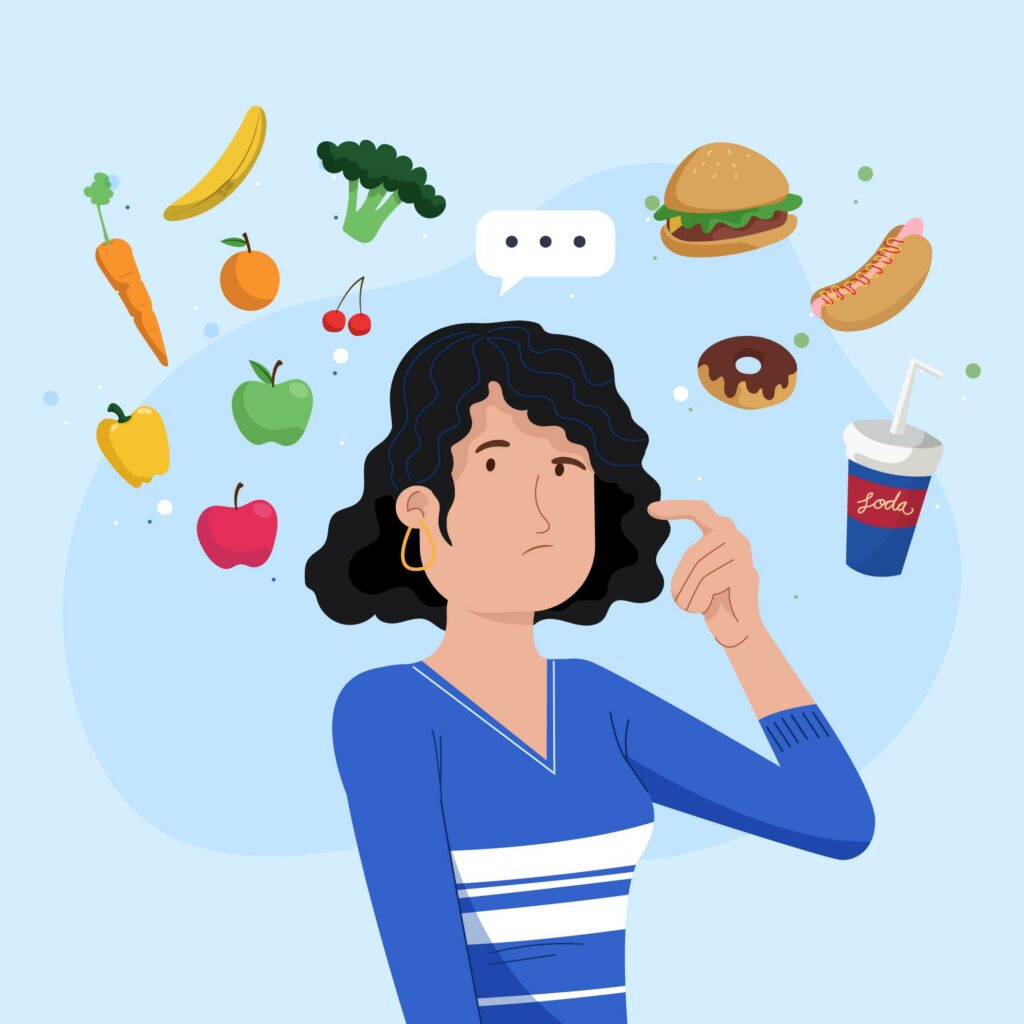Emotional eating is a common response to stress, boredom, or sadness. Often, it’s our way of seeking comfort, but the temporary relief can lead to unhealthy habits, weight gain, and feelings of guilt. Managing emotional eating is crucial for maintaining both physical and mental well-being. In this blog, we’ll explore practical strategies to break the cycle and foster a healthier relationship with food.
What Is Emotional Eating?
Emotional eating refers to using food to cope with emotions rather than satisfying physical hunger. Instead of eating to fuel your body, you might eat to distract yourself from negative feelings. This behaviour often involves craving high-calorie, sugary, or fatty foods, which can provide short-term pleasure but may have long-term consequences for your health.
Signs You Might Be an Emotional Eater
- Eating even when you’re not physically hungry.
- Craving specific comfort foods, such as sweets or chips, when upset.
- Using food as a reward or to celebrate.
- Feeling guilty or ashamed after eating.
- Eating in response to emotions like stress, boredom, or sadness.
Recognizing these signs is the first step in managing emotional eating.
Common Triggers of Emotional Eating
- Stress: Elevated cortisol levels can increase cravings for high-fat, sugary foods.
- Boredom: Eating provides a distraction or fills idle time.
- Loneliness: Food can act as a substitute for emotional connection.
- Fatigue: Low energy levels may lead to overeating for a quick energy boost.
- Emotional Associations: Celebrating with food or comforting yourself with childhood favourites.
Strategies to Manage Emotional Eating
1. Identify Your Triggers
Keep a food and mood journal to track what you eat, when you eat, and how you feel. Patterns may emerge, helping you pinpoint emotional triggers.
2. Practice Mindful Eating
- Eat slowly and savour every bite.
- Avoid distractions like screens while eating.
- Tune into your body’s hunger and fullness signals.
3. Find Healthy Alternatives
Replace emotional eating with other coping mechanisms:
- Stress relief: Practice yoga, meditation, or deep breathing.
- Boredom: Engage in a hobby, read, or go for a walk.
- Loneliness: Call a friend or join a community activity.
4. Build a Balanced Diet
Eating nutrient-dense meals can stabilize blood sugar levels and reduce cravings. Include:
- High-fibre foods like fruits, vegetables, and whole grains.
- Lean proteins such as fish, chicken, or legumes.
- Healthy fats from nuts, seeds, and avocados.
5. Stay Hydrated
Thirst is often mistaken for hunger. Drink water throughout the day to stay hydrated and reduce unnecessary snacking.
6. Allow Yourself Occasional Treats
Restricting foods completely can lead to binge eating. Enjoy your favourite treats in moderation to satisfy cravings without overindulging.
7. Seek Support
If emotional eating feels overwhelming, consider talking to a therapist or joining a support group. Professional guidance can provide personalized strategies and emotional relief.
Breaking the Cycle: Actionable Tips
- Pause Before Eating: Ask yourself if you’re truly hungry or if emotions are driving your cravings.
- Prepare Healthy Snacks: Keep nutritious options on hand to avoid reaching for unhealthy comfort foods.
- Establish a Routine: Regular meal times can help reduce impulsive eating.
- Set Realistic Goals: Focus on progress, not perfection, and celebrate small victories.
Conclusion
Managing emotional eating takes time and patience, but it’s achievable with self-awareness and the right strategies. By identifying triggers, practicing mindful eating, and finding healthier coping mechanisms, you can break the cycle and develop a positive relationship with food. Remember, it’s not just about controlling what you eat but understanding why you eat—and addressing the root cause with compassion.
Take the first step today, and empower yourself to make lasting changes for a healthier, happier you.



